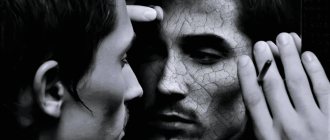Today it can hardly be denied that, along with the laws of the material world, there also exists the so-called subtle plane. The mental level is closely related to the energy structure of a person, which is why we have individual feelings, thoughts, desires, and moods. The entire emotional sphere of the individual is subject to the laws of the psyche and completely depends on its coordinated work.
A person with a healthy mental organization feels happy and quickly restores internal balance. He strives for self-realization, he has enough strength for new achievements and ideas. Anyone who lacks energy for activities that would bring him pleasure sometimes has a weak psyche, and he is often visited by a feeling of vulnerability, exposure to life, which every now and then throws new challenges at him. Self-confidence largely depends on mental processes and the emotional sphere.
The psyche is an amazing and mysterious system that allows him to interact with the surrounding reality. The inner world of a person is an extremely subtle immaterial substance that cannot be measured by the laws of the material world. Each person is unique, each person thinks and feels individually. This article examines the processes of mental reflection and their connection with the inner world of the individual. The material will be useful to all readers for the formation of general ideas about the human psyche.
Process Features
Mental reflection is accompanied by a number of characteristic conditions, which are its specific manifestations.
Activity
The individual perceives the surrounding space not passively, but trying to influence it in a certain way. That is, each of us has our own ideas about how this world should be structured. As a result of mental reflection, a change in the individual’s consciousness occurs, reaching a new level of understanding of reality. We are all constantly changing, improving, and not standing still.
Focus
Each person acts in accordance with the task at hand. No one will spend time doing something for nothing if it does not bring material or moral satisfaction. Mental reflection is characterized by awareness and a deliberate desire to transform existing reality.
Dynamism
The process called mental reflection tends to undergo significant changes over time. The conditions in which an individual operates change, and the approaches to transformation themselves change.
Uniqueness
We should not forget that each person has distinct individual characteristics, his own desires, needs and desire for development. In accordance with this circumstance, each person reflects mental reality in accordance with his individual character qualities. The inner world of a person is so diverse that it is impossible to approach everyone with the same standard.
Anticipatory character
By reflecting objects and phenomena of the surrounding world, an individual creates a kind of foundation for the future: he acts to attract better and more meaningful conditions into his life. That is, each of us always strives for useful and necessary progression.
Objectivity
Mental reflection, although characterized by subjectivity and individuality, still contains a set of certain parameters so that any such process is correct, complete and useful.
Features of mental reflection contribute to the formation of an adequate human perception of these processes.
Psychic reflection
Mental reflection is a subjective idea of the world. Everything that enters the human consciousness through the senses is subjected to specific processing based on existing experience.
There is an objective reality that exists regardless of human consciousness. And there is a mental reflection, which depends on the characteristics of the senses, emotions, interests and level of thinking of the individual. The psyche interprets objective reality based on these filters. Thus, mental reflection is a “subjective image of the objective world.”
When a person rethinks his reality, he forms a worldview based on:
- events that have already occurred;
- actual reality of the present;
- actions and events that are about to happen.
Each person has his own subjective experience, it firmly settles in the psyche and influences the present. The present carries information about the internal state of the human psyche. While the future is aimed at realizing tasks, goals, intentions - all this is reflected in his fantasies, dreams and dreams. We can say that a person is in these three states simultaneously, regardless of what he is thinking about at the moment.
Mental reflection has a number of features and characteristics:
- The mental (mental) image is formed in the process of active human activity.
- Enables you to correctly reflect reality.
- It is proactive in nature.
- Refracted through a person’s individuality.
- Ensures the appropriateness of behavior and activities.
- The mental reflection itself deepens and improves.
This implies the main function of mental reflection: reflection of the surrounding world and regulation of human behavior and activity for the purpose of survival.
Levels of psychic reflection
Mental reflection serves to create a structured and integral image from dismembered objects of reality. Soviet psychologist Boris Lomov identified three levels of mental reflection:
- Sensory-perceptual . It is considered the basic level on which mental images are built, which arise first in the process of development, but do not lose their relevance subsequently. A person is based on information that arrives through his senses and builds an appropriate behavior strategy. That is, a stimulus causes a reaction: what happened in real time influences a person’s behavior.
- Presentation layer . In order for a person to have an image, it is not at all necessary that it be present here and now and that it be stimulated with the help of the senses. For this purpose there are imaginative thinking, memory and imagination. A person can evoke the idea of an object if it has appeared several times before in his field of vision: in this case, the main features are remembered, while the secondary ones are discarded. The main functions of this level: control and correction of actions in the internal plan, planning, drawing up standards.
- Verbal-logical thinking and speech-thinking level . This level is even less connected with the present time; it can even be called timeless. A person can operate with logical techniques and concepts that have developed in his consciousness and the consciousness of humanity over its history. He is able to abstract from the first level, that is, not to be aware of his sensations and at the same time fully concentrate, relying on the experience of humanity.
Despite the fact that often the three levels function as if on their own, in fact they smoothly and imperceptibly flow into each other, forming a person’s mental reflection.
Forms of mental reflection
The elementary forms of reflection are: mechanical, physical and chemical. The main form of reflection is biological reflection. Its specificity is that it is characteristic only of living organisms.
During the transition from the biological form of reflection to the mental form, the following stages are distinguished:
- Perceptual . It is expressed in the ability to reflect a complex of stimuli as a whole: orientation begins with a set of signs, and there is a reaction to biologically neutral stimuli, which are only signals of vital stimuli (sensitivity). Sensations are an elementary form of mental reflection.
- Sensory . Reflection of individual stimuli: the subject reacts only to biologically significant stimuli (irritability).
- Intelligent . It manifests itself in the fact that in addition to the reflection of individual objects, a reflection of their functional relationships and connections arises. This is the highest form of mental reflection.
The stage of intelligence is characterized by very complex activities and equally complex forms of reflecting reality.
Is our mental reflection immutable or can we influence it? We can, but provided that we develop self-regulation, with the help of which we are able to change perceptions and even sensations.
Self-regulation
Self-regulation is a person’s ability, despite circumstances, to maintain internal stability at a certain, relatively constant level.
A person who does not know how to manage his mental state sequentially goes through the following stages:
- Situation: The sequence begins with a situation (real or imagined) that is emotionally relevant.
- Attention: attention is directed to the emotional situation.
- Assessment: The emotional situation is assessed and interpreted.
- Answer: An emotional response is generated, leading to loosely coordinated changes in experimental, behavioral and physiological response systems.
If a person has developed willpower, he can change this behavior pattern. In this case, the model will look like this:
- Choice of situation: a person decides for himself whether this situation is needed in his life and whether it is worth getting emotionally close to it if it is inevitable. For example, he chooses whether to go to a meeting, a concert or a party.
- Changing the Situation: If a situation is unavoidable, then a person makes a conscious effort to change its impact. For example, he uses a sense of humor or physically moves away from an object or person that is unpleasant to him.
- Mindful deployment: involves directing attention toward or away from an emotional situation. This is achieved through distraction, rumination, and thought suppression.
- Cognitive changes: modification of how to appraise a situation to change its emotional meaning. A person uses such strategies as revaluation, distance, humor.
- Response modulation: attempts to directly influence experimental, behavioral, and physiological response systems. Strategies: expressive suppression of emotions, exercise, sleep.
If we talk about specific practical methods, we highlight the following:
- Neuromuscular relaxation . The method consists of performing a set of exercises consisting of alternating maximum tension and relaxation of muscle groups. This allows you to relieve tension from individual parts of the body or from the entire body.
- Ideomotor training . This is a sequential tension and relaxation of the muscles of the body, but the exercises are not performed in reality, but mentally.
- Sensory reproduction of images . This is relaxation by imagining images of objects and complete situations associated with relaxation.
- Autogenic training . This is training in the possibilities of self-hypnosis or autosuggestion. The main exercise is speaking affirmations.
As we see, a person can decide how to relate to a given situation. However, given that will is an exhaustible resource, it is necessary to obtain energy through sleep, rest, exercise, proper nutrition, as well as specific techniques.
Did you like the article? Join our communities on social networks or our Telegram channel and don’t miss the release of new useful materials: TelegramVKontakteFacebook
We also recommend reading:
- Storytelling
- “I-concept”: characteristics, features, meaning
- Language and thinking
- Mental processes: types and brief description
- Theory of knowledge
- Sensation and perception
- Human attention: what it is and how it works
- Sensations: what they are and what they are like
- Types of memory and their features
- Mental infantilism
- Materialism and idealism in philosophy
Key words:1Psychoregulation
Presentation layer
The second level is closely related to the imagination and creative abilities of the individual. Ideas arise in a person’s head when, based on existing images, as a result of certain mental actions, new models of the surrounding world and judgments are formed.
Such a phenomenon as creative activity, of course, in most cases depends on how developed the emotional-imaginative sphere is in a person. If an individual has strong artistic abilities, then he will develop his own ideas in accordance with how often and quickly new images will interact with existing ones.
Verbal-logical level
This level is characterized by the presence of a speech-thought process. It is known that a person’s ability to speak is closely related to thinking, as well as to other cognitive processes. It must be recognized that reflection at the conceptual level contributes to the development of rational cognition. Here, not just ideas about some phenomena or objects are formed, but entire systems arise that make it possible to build substantive connections and relationships. In the process of conceptual thinking, language is the main sign system, which is actively used to establish and maintain contact between people.
The highest form of mental reflection is, of course, human consciousness. It is the degree of its development, as well as motivation, that determines whether a person can independently move through life, take active steps to achieve his desires, and act purposefully.
Definition of the psyche according to Galperin P.Ya.
Psyche is a special property of highly organized matter. This is a short, concise formula, and in order to better convey its real meaning, its content should be somewhat expanded.
Firstly, he asserts: the psyche is a property, and not a “substance” or a separate “thing” (object, process, phenomenon, force), as was believed in pre- and extra-Marxist teachings about the psyche.
Psyche is a property of highly organized matter; not just any matter, but only highly organized matter - and therefore appears relatively late, at a high stage of development of the world. In the language of modern natural science, this can be explained simply: The psyche appears only in living bodies, in organisms, and not in all animals, but only in those that lead an active, mobile life in a complex structured environment16. They must actively and constantly adapt their behavior to constant changes in this environment and their position in it, and this requires a new auxiliary apparatus of behavior - mental activity.
The psyche as a property that arises only in highly organized beings is not a universal and primary property, but a secondary and derivative one. It assumes the existence of mechanisms that produce it, and its undoubted usefulness for the body, which justifies its production.
Psyche is a special property. Against the background of subjective idealistic ideas about the psyche, its “peculiarity” was understood as exclusivity in relation to the entire material world. From the point of view of dialectical materialism, this “feature” has a completely different meaning. It denotes, firstly, the irreducibility of the psyche to the physiological processes that generate it and constitute its physiological basis, and, secondly, the identification and differentiation in the process of evolution of the organic world of two large levels of development of organisms: those deprived and endowed with mental activity.
What specific content is meant when one speaks of an ideal? First of all, it is a picture, an image of an object, process or phenomenon. But this is an image of an object, and not the object itself, and in this sense it is another, ideal object. This other object is "ideal" in two respects. Firstly, its characteristics - no matter how many there are and no matter how complex the combination - are presented in the image in isolation, separately from other characteristics of the original or its material reflection, without which not a single “thing” can exist in reality. Secondly, this separation of the features of the image from other features of really existing things and from its original or its reflection is presented as the purification of the image from everything inessential. The image is revealed as an object presented only in its essential features; hence, by the way, the combination of the terms “ideal” and “perfect”. The psychological advantage of such a reflection of the object in the form of an image in which only that which is essential for physical or mental action is represented is obvious. But this advantage also has a downside: the image is revealed as a thing, free from the limitations of material things, as an ideal being. This is the illusion of thought, which begins to think about images, having only those ideas that it has acquired in experience with physical things.
Unlike material, which exists independently of consciousness, from the psyche, an image exists only in consciousness, only in the psyche. The ideal is not a way of being, but the totality of the properties of an object that is revealed to the subject - the way in which the object appears to the subject. This corresponds to the well-known definition of the ideal by K. Marx: “... the ideal is nothing more than matter transplanted into the human head and transformed in it.” In this form, the ideal is for the subject only the content of a mental reflection of the objective world.






